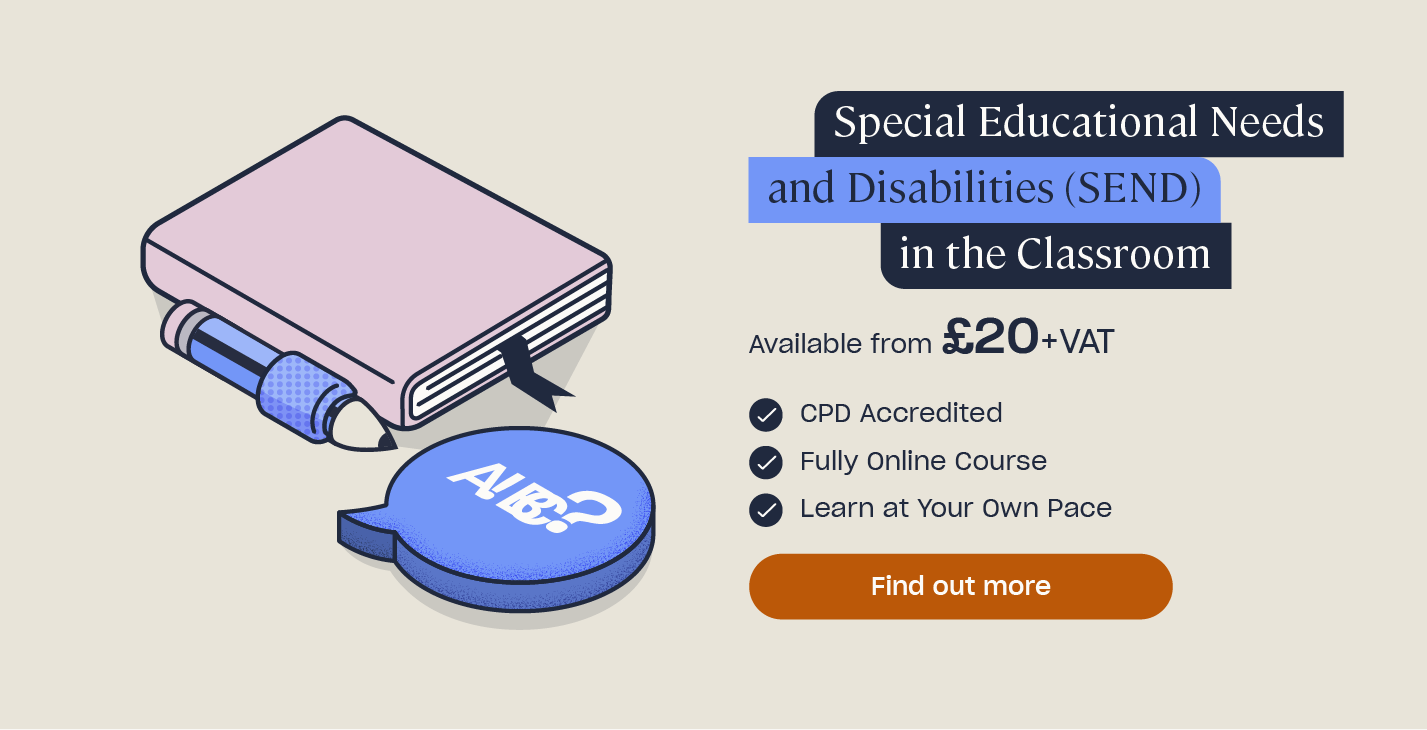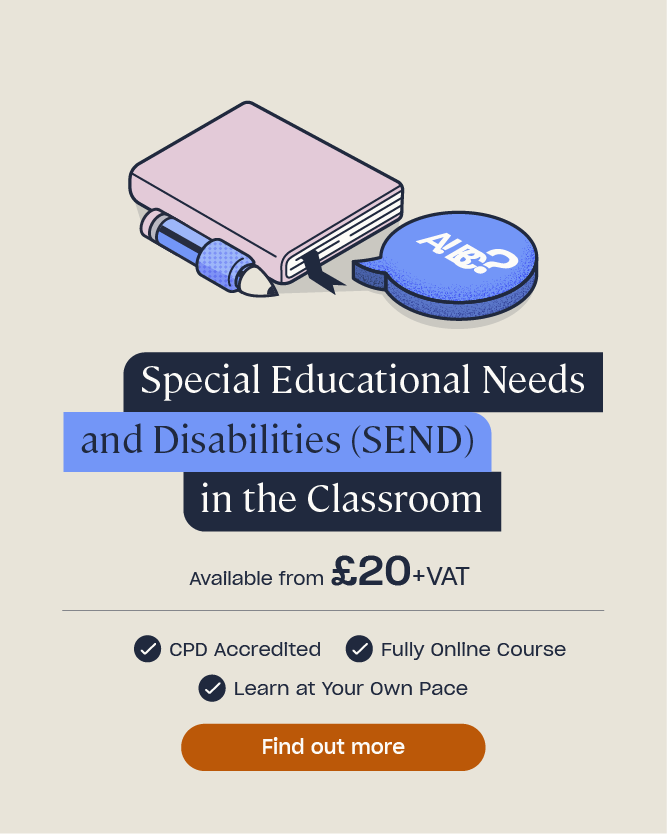How to Support SEMH in Schools
SEMH stands for social, emotional, and mental health. Research suggests that one in six children, aged five to 16, are likely to have a mental health problem – that’s around five children in each class. Feeling confident in supporting SEMH needs is an important priority for everyone who works with children.
In this article, we will define what SEMH refers to in further detail, including exploring some of the signs and symptoms that might indicate that a child is experiencing SEMH difficulties. We’ll explain the possible barriers to learning that can accompany SEMH needs. We will also discuss how schools can effectively promote awareness of SEMH, alongside providing you with a downloadable poster, and some general SEMH strategies that you can put into place to support the children and young people that you work with, or care for.

What is SEMH?
Essentially, social and emotional skills are about our ability to regulate our thoughts, emotions, and behaviours.
- Social skills – how we relate to others – using skills such as cooperation, compassion, collaboration, tolerance, respect, empathy, and trust.
- Emotional skills – how we relate to ourselves, using skills such as perseverance, self control, emotional stability, curiosity, motivation, resilience, responsibility, and conscientiousness.
Our mental health is our emotional, psychological, and social wellbeing. It affects how you think, feel, and act throughout your life, and it has a direct impact on your overall health.
The three are interrelated, intrinsically intertwined.
SEMH is a term that was introduced in the Special Educational Needs and Disability (SEND) Code of Practice 2015 to categorise one of the four broad areas of need. This replaced earlier categorisations, such as BESD (Behaviour, Emotional, Social Difficulties), which placed a strong emphasis on behaviour.
The term SEMH asks professionals to focus on the needs behind the behaviour, rather than the behaviour itself. The inclusion of the term mental health places great significance on the importance of prioritising children’s mental health, and wellbeing.

SEMH needs may be genetic, be related to attachment issues, or they may develop in response to stressful situations, including experiencing trauma or adversity in childhood. If children are not supported effectively, they may go on to develop a long-term, diagnosable SEMH condition.
Each child is unique and so the roots of the issues, the ways in which their difficulties present, and the support that they will require, will be individual to them.
However, certain individuals and groups are more at risk of developing SEMH difficulties. These risk factors include:
- Having a diagnosable SEND condition, such as Attention Deficit Hyperactivity Disorder (ADHD) or autism.
- Having an attachment disorder.
- Having a medically unexplained condition, such as an unmet communication need.
- Having a sensory difficulty, which may not have been addressed.
- Experiencing early-life trauma, such as abuse, neglect, severe bullying, parental separation, or the death of a loved one.
Research also shows that LGBTQ+ young people are three times more likely to self-harm and twice as likely to have depression, anxiety, and panic attacks, as well as to be lonely and worry about their mental health on a daily basis.
Potential SEMH Symptoms and Signs
Some children will have their SEMH needs identified at an early age, whilst others’ needs may not be detected until they reach a group setting, or later still.
Children’s feelings of fear, frustration, anger, anxiety, isolation, and sadness may manifest in a variety of behaviours, from aggressive outbursts to a lack of concentration. It is often these externalising behaviours that first indicate a need.

Monitoring behaviour carefully can help us to identify those children whose SEMH needs are affecting their daily lives. It is vital to provide early support and intervention to help prevent difficulties from escalating.
As someone who works closely with children, you will be well-placed to identify early signs of a possible SEMH issue arising (especially if there is a notable change in behaviour). Children may display passive or active behaviours, alerting you to a potential difficulty.
Passive Behaviours may include.
- Anxiety and/or depression.
- Low mood.
- Low self-worth or being withdrawn.
- Lethargy.
- Being forgetful.
- Difficulty accepting praise.
- Difficulty engaging or focusing, and often daydreaming.
- Difficulty maintaining friendships.
Active behaviours may include:
- Restlessness.
- Mood swings.
- Verbal or physical aggression.
- Reactive and/or impulsive behaviours.
- Poor attendance.
- Lack of awareness of personal space.
- Difficulty showing empathy.
- Eating disorders, self-harm, and substance abuse.
Online Education Training
Find out more about topics such as SEND in the Mainstream Classroom and Child Mental Health Training through our range of accredited and certified online training. You can access the full Education course library here.
What are SEMH Barriers to Learning?
Looking at the indicators above, it is easy to see that SEMH needs can present a huge barrier to learning for some children and young people.
The following statistics illustrate how learning outcomes can be impacted by unmet SEMH needs.
- 99% of children with SEMH diagnoses do not achieve the national average expected academic progress of their peers.
- One in two students who are permanently excluded have a diagnosis of SEMH needs.
In order to engage with learning, children need to feel safe and secure, and be able to focus their attention. They need to feel able to take risks and try without fearing failure. Children with SEMH needs may find it difficult to regulate their emotions and maintain healthy relationships. Additionally, having an SEMH need may cause children to feel socially excluded, isolated, anxious, upset, angry, or misunderstood.

Through early identification, impactful intervention, and preventative strategies, schools can help to tackle the rising numbers of children’s undiagnosed and untreated SEMH needs.
In the ‘assess’ phase of the Graduated Approach, you should be able to identify the particular barriers to learning, and any related support needs, of the individual child. (For more detailed information on the Graduated Approach, see our article here.) You should always start with the views of the child themselves and their parents/carers, and can also make use of specialised SEMH assessments. Your SENCo will be able to advise you as to what assessment tools your setting uses.
How Can Schools Promote SEMH Awareness?
In order to raise awareness of SEMH in schools, providers must focus on the social, emotional, and mental health needs of the children and young people in their care.

Our poster, which can be downloaded below, highlights the following key points:
- Specialist knowledge -encourage staff to include SEMH awareness as part of their continued professional development. A personal development plan can help teachers and support staff identify areas for improvement, and plan working towards those goals.
- Strong relationships – prioritising staff-student and student-staff relationships in school, means that teachers, teaching assistants, and other staff know their cohorts well, and can therefore recognise any changes in children’s behaviours.
- Universally understood policies – policies such as the behaviour policy should be accessible and consistent (whilst remembering that, in line with the Equality Act 2010, behaviour policies cannot discriminate against children or young people with a disability) Our article with guidance on creating or updating behaviour policies can be found here.
- Creative curriculums – develop a wider curriculum, and extracurricular activities, that provide opportunities for all students to enrich their learning, and to experience challenge and success.
- Passionate leaders – to achieve whole-school awareness of SEMH, it needs to be a priority at leadership level. The DfE is encouraging schools to appoint and train a senior mental health lead to promote and drive SEMH priorities.
- External providers – in order to fully support needs, specialist services may be accessed. Signposting pupils and staff to resources, organisations, and charities that could further support their wellbeing is also important.
Social, Emotional, and Mental Health Teaching Strategies
Whilst every child’s needs will be different, the following general strategies can help support SEMH needs in the classroom.

Support transitions – To reduce uncertainty, prepare pupils for key transition points, making predictable changes to routines and environments. Autistic children and young people will often struggle with transitions – big or small.
Adapt your praise – Some children with SEMH needs find it difficult to accept praise, but it is important that they receive it. By getting to know them and their preferences you will be able to offer praise in a way that works for them.
Teach mindfulness – Many children struggle when managing stressful, unstructured, or high-sensory situations. Mindfulness exercises (such as meditations and breathing practices) can help children to become calmer, and more accepting and connected to the present.
Teach social and emotional skills – Schools should actively teach and embed opportunities for pupils to develop self-awareness, self-belief, resilience, planning, social skills, and emotional literacy. A useful audit toolkit and guidance from the Education Endowment Fund (EEF) regarding social and emotional learning can be accessed here. Children with specific SEMH needs may need to be taught these skills in a more targeted, intensive, and explicit way, through one-to-one interventions or nurture groups.

Have a classroom worry box – Instead of having to hold on to a worry, children can physically remove it and put it into their classroom’s anonymous worry box. Releasing anxious thoughts can be a soothing experience. Fears/uncertainties can then be addressed. Find our article containing further tips on helping children to express their feelings and emotions here.
Consider the classroom environment – you may need to make adaptations to help make it a calm, structured place. Consider seating arrangements, the sensory impact of the space, and try to include a calm area where a child can go if they need to.
Prepare self-soothe boxes – Self-soothe boxes are made by the child, and are filled with items which make them feel calm. This could, for example, include a photograph, a piece of material, a lavender bag, or a seashell. If a child begins to feel overwhelmed, they can then collect their box and spend some time looking at each of the objects they have included.
Get physical – evidence shows that physical activity can improve wellbeing. Include movement breaks in the day, use teaching resources that combine physical activity with other learning (such as BBC’s Supermovers).

Get outside – similarly getting into the open air can have a beneficial effect. When planning, consider if a portion of the lesson can be outside (art and science particularly lend themselves to this), or combine with regular physical activity such as the Daily Mile.
By being aware of how SEMH needs may present themselves in class, interpreting behaviour that challenges as an expression of those needs, and keeping your own knowledge and training relating to SEMH up to date, you will be in a good position to help support the social, emotional, and mental health of the children and young people that you work with. Remember that it is also important to monitor and support your own mental health and wellbeing, in order to be able to successfully support others.
Further Resources:
- SEND in the Classroom Course
- Mental Health Resource Pack for Schools
- Supporting Pupils with SEN in the Classroom: Guidance for Teachers
- What is Adaptive Teaching?
- How to Support Children with Pathological Demand Avoidance (PDA)
- How to Support a Child with Autism in the Classroom
- How to Create a Positive Learning Environment
- Suicide Prevention in Schools
- Epilepsy Awareness Training











